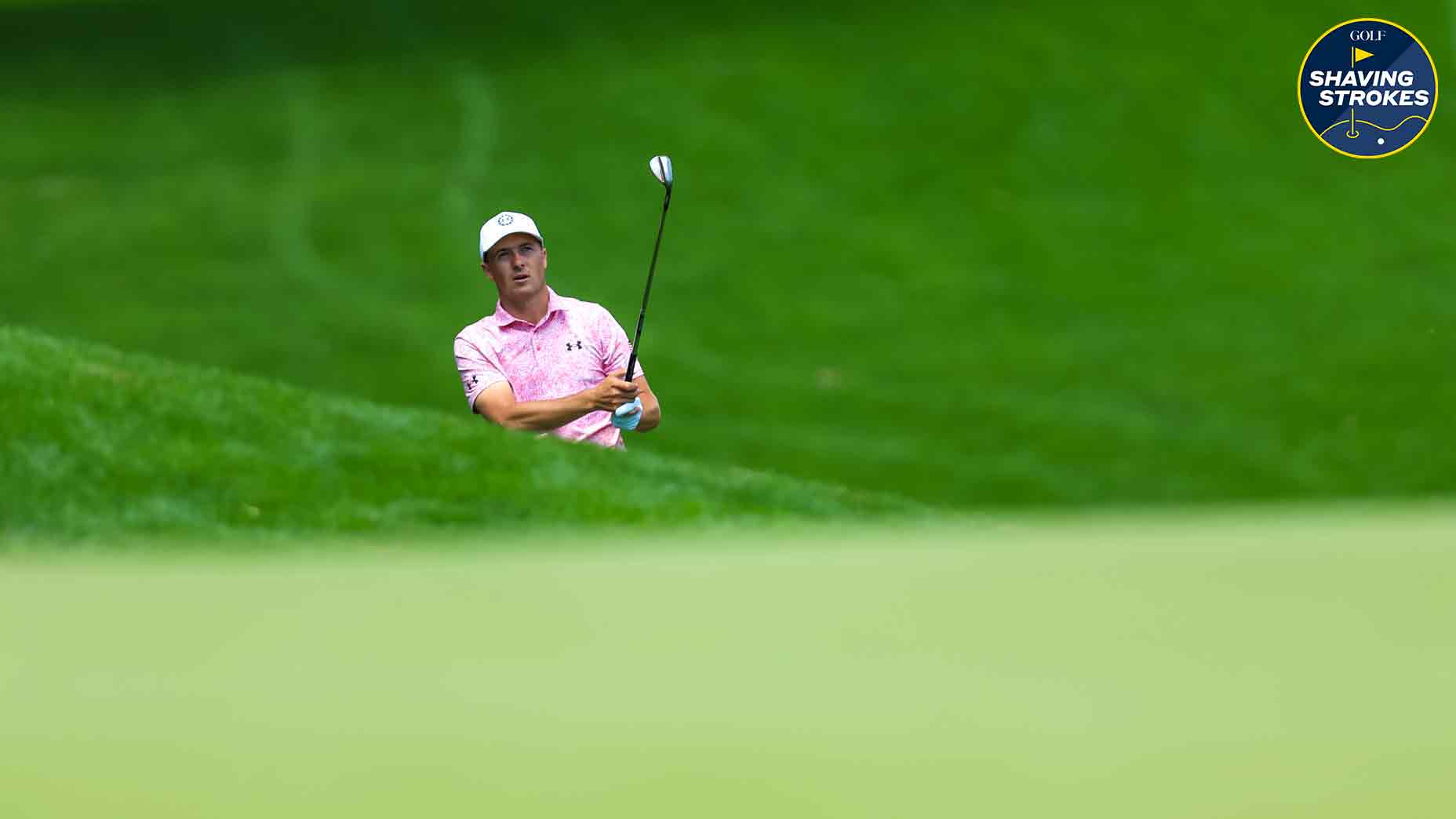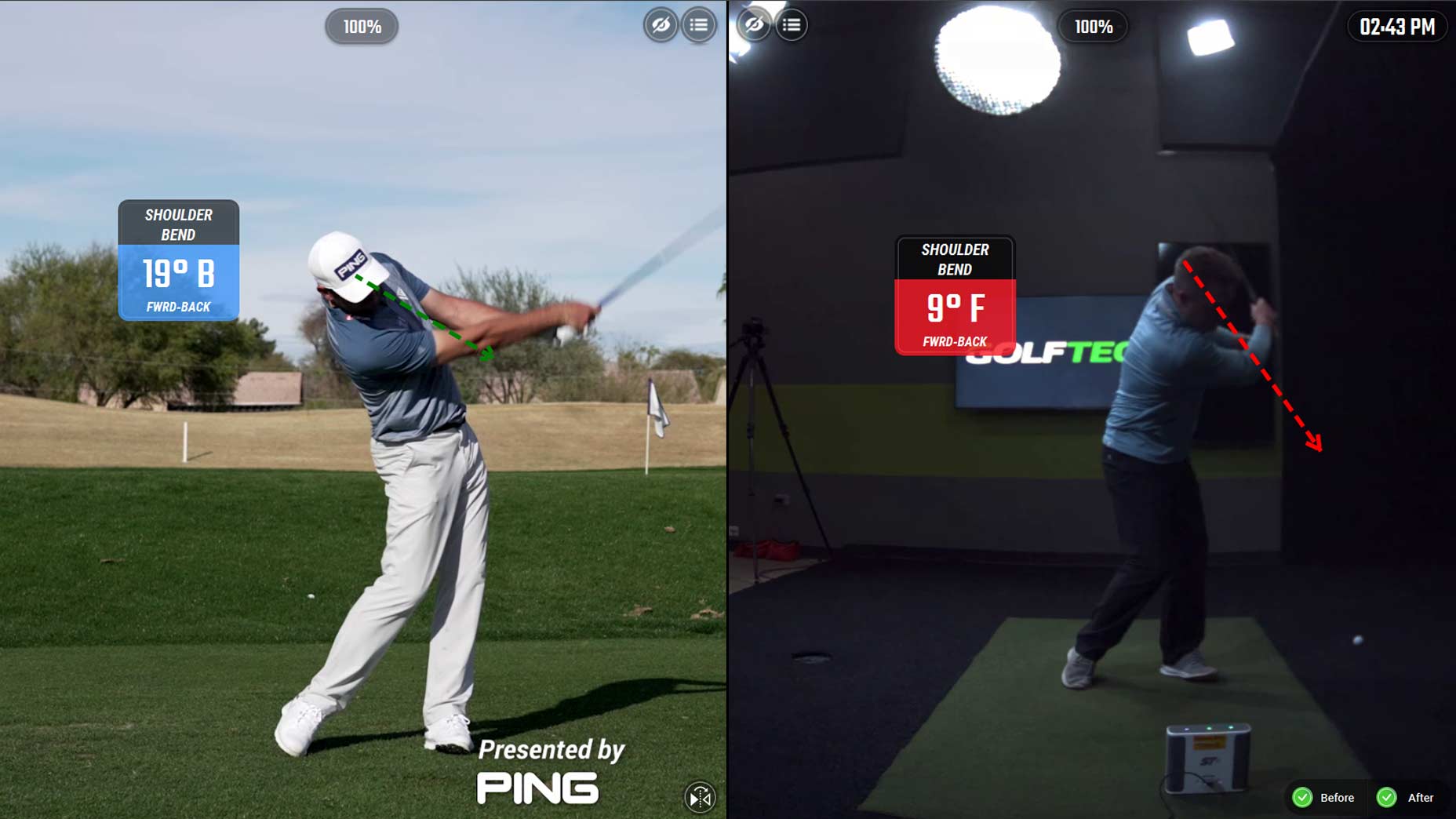Chunking a wedge shot can be infuriating, but doing it when you’re hitting to an elevated green can cause a full-fledged mental breakdown.
That’s because when you’re hitting to a flat green, you have a little bit more forgiveness if you mishit it — as the ball may still reach the putting surface, just not necessarily close to the pin. But when the green’s elevated, disaster can happen, leading the ball to come up short and rolling…rolling…rolling back down the very hill you’re standing on.
How many of us have experienced the below before?
So if you’re someone who routinely chunks wedge shots near elevated greens (or in general), GOLF Top 100 Teacher Doug Spencer has a go-to guide to help you overcome the issue.
From properly reading the lie to determining what type of short-game shot has the highest chance of success, Spencer shares an easy process to use in order to finally cure the chunks, helping you become a better wedge player. Check out what he has to say below.
How to stop chunking wedges around elevated greens
How can you start making better contact and experience better results? Spencer presents a blueprint that will help you avoid all those frustrating misses.
“Here are some strategies to create a go-to guide with questions to address,” he says. “So instead of a costly mishit, you’ll find ways to consistently get your ball closer to the hole.”
Assess the situation by asking these questions
1. Determine the lie of the ball: how is it sitting in the grass?
Is the ball buried or is it sitting up? Once you have an idea of this, you can figure out what type of shot you need to hit and how much loft you might need on your club.
2. Take inventory of the slope: what’s the slope for your stance, and what’s the slope of the green for your chipping target?
Are you hitting from an uneven lie where the ball’s either below or above your feet? How will this impact your club path and contact? And how much do you need on your shot to reach the elevated green? If you have some room in front of you, you’ll need to make sure you take more club to avoid any chance of the shot coming up short and rolling back down.
3. Consider the course conditions: is the grass wet, dry, muddy or something else?
This is one thing a lot of amateurs forget to do when hitting any type of shot, not just wedge shots. Your contact and result will absolutely be impacted by course conditions, as moisture can get between the ball and the clubface at impact. Likewise, the ball will roll less once it lands if the greens have moisture on them. These are important factors to know about.
4. Review the wind: is there a wind and how strong is it?
Similar to the above, you need to account for wind from any direction. If it’s at your face, take more club. If it’s coming from behind you, take a little less club. And if it’s coming from either the right or left side, adjust your target accordingly.
5. Confirm that your best option is to chip: is there an option to roll the ball to the putting surface, is the grass too thick, or do you need to clear an obstacle?
Depending on how close you are to the putting surface, you can always opt for a Texas wedge type of shot — which simply refers to the idea of using a putter (or a low-lofted club) when just off the green, rather than trying to hit a wedge. But before even considering that, you not only need to see what’s in front of you, but you have to check if the grass is short enough to roll it.
Ask these questions to help choose the right club
1. What clubs are you most comfortable with from this situation?
OK, so you’ve practiced with all sorts of wedges and have an understanding of which club gives you the best opportunity for success — can you use it here? If you’re routinely chunking your lob wedge, don’t even consider it as an option. Instead, rely on the one that you’ve seen good results from and commit to hitting it here.
2. Do the course conditions dictate the need for more loft and bounce or less?
How soft is the ground, and what’s your lie look like? These are just two things to consider when figuring out which club to use and how much (or how little) bounce you need. Additionally, are you near-sided, or do you have room to roll the ball on the putting surface to the pin? By observing and understanding this, you’ll be able to use the right club for the shot at hand.
How to hit a successful chip shot
Now that you’ve got a go-to guide to help stopping chunking wedge shots, Spencer shares his best tips to go out and execute a great chip shot to an elevated green.
“A good chip shot requires ball-first contact,” Spencer says. “For a right-handed player hitting to a turtleback green from a flat, muddy fairway lie, set up with a narrow stance, where your right side is higher than your left and the bottom of your swing arc is in front of the ball (head forward, chest turned left and ball slightly back of the middle of your stance).”
After dialing in your setup, Spencer says it comes down to which short game shot you feel most comfortable with in this situation.
“Whether you need to hit a high or low shot, your setup writes the script,” he says. “So practice hitting from different lies and adjust your club, stance, ball position and club delivery, which should help build your confidence for all shot types. Spend time at the practice area to better understand the impact of these changes. This allows you to confidently deliver the right technique with precision and finally eliminate chunking wedge shots.”











